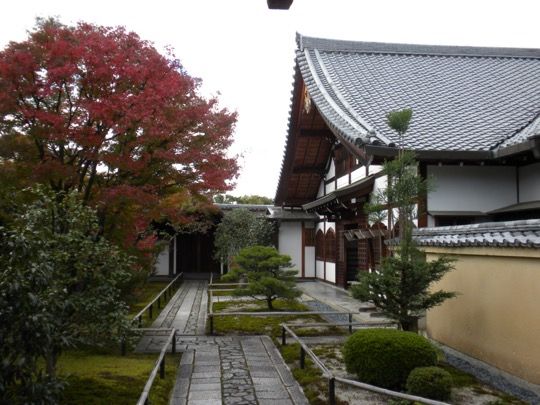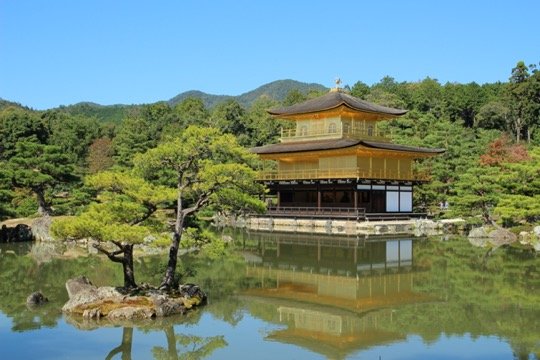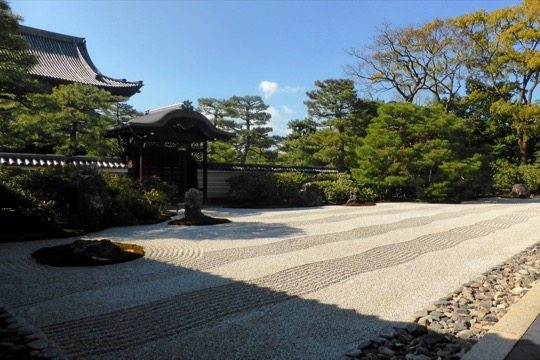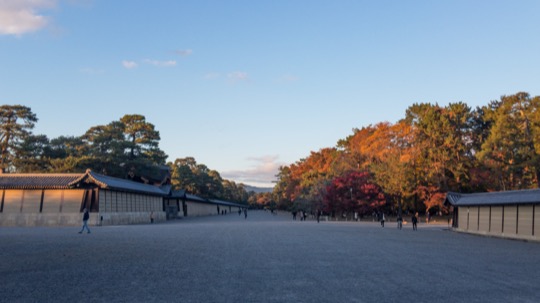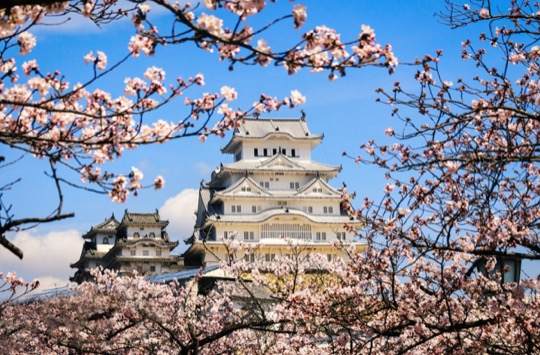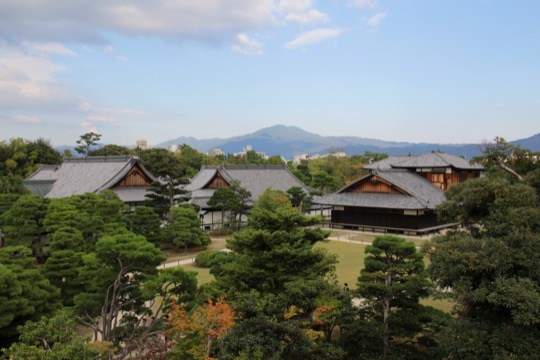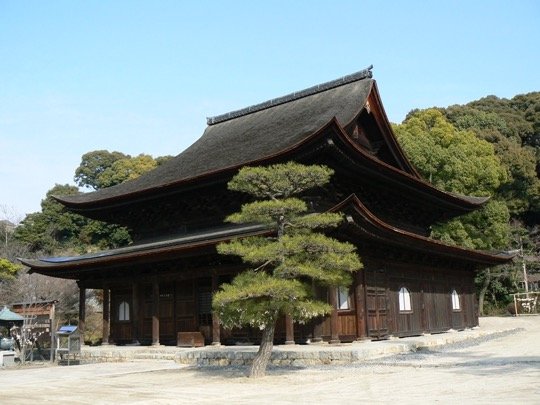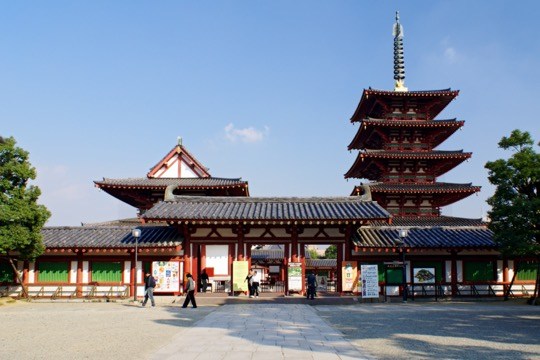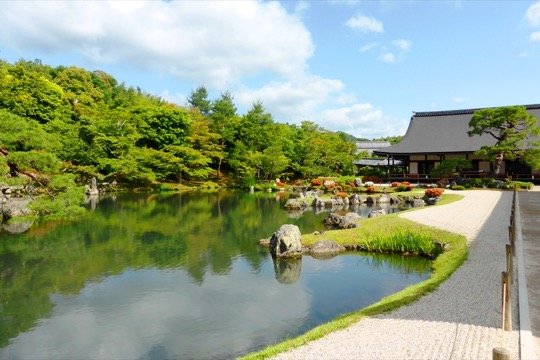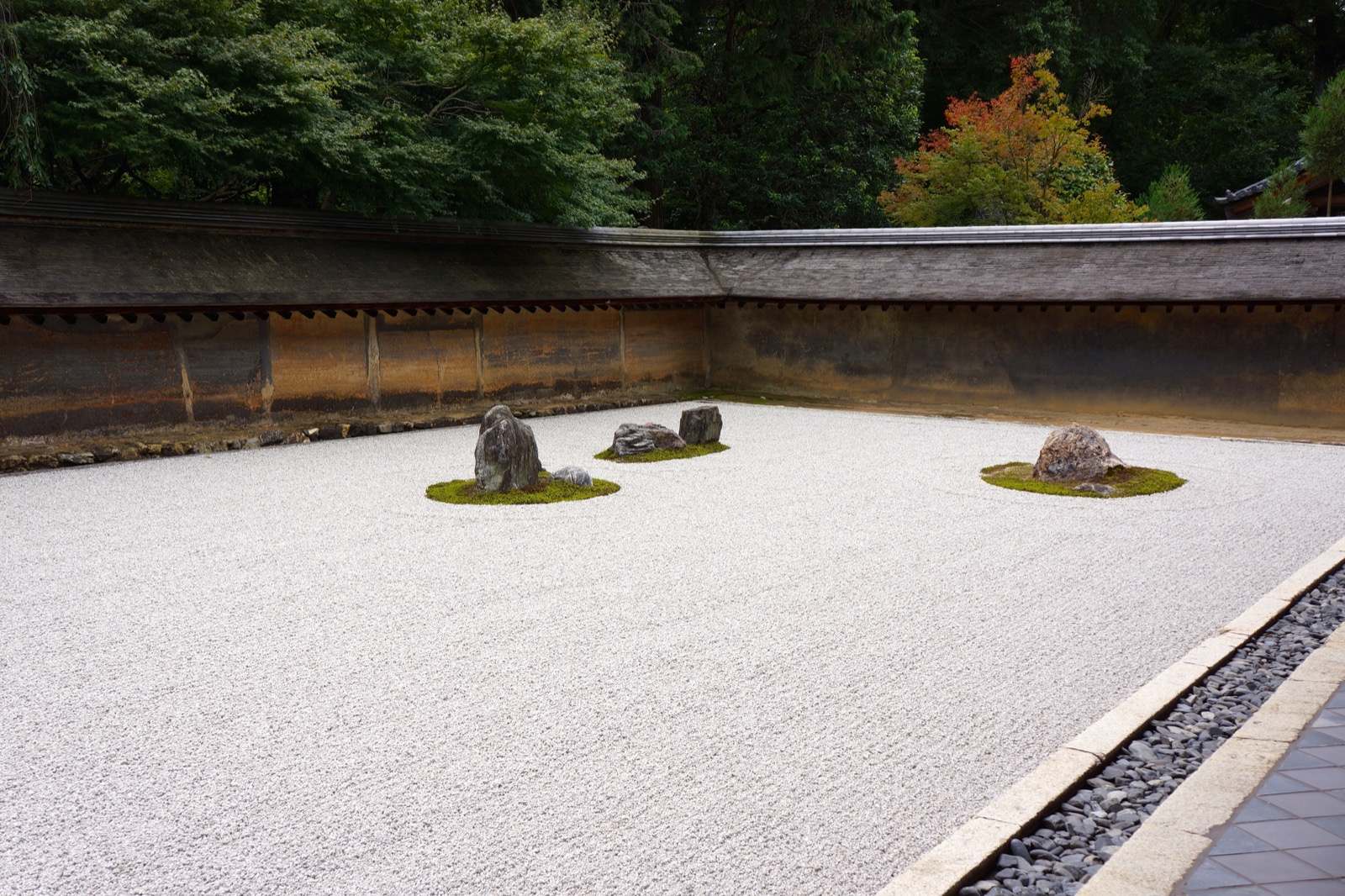
On This Page
Ryoanji Temple, renowned for its karesansui or dry landscape garden, exemplifies Zen aesthetics and philosophy. A UNESCO World Heritage Site in Kyoto, Japan, the temple invites contemplation through its simple yet profound beauty. Its history as an aristocratic villa transformed into a Zen temple and its iconic rock garden with 15 stones—some of which are perpetually hidden—make it a significant cultural site.
Originally an aristocrat’s villa in the Heian Period, Ryoanji Temple was converted into a Zen temple in the late 15th century by Hosokawa Katsumoto, a powerful warlord. The site, also known as the Temple of the Dragon at Peace, was later utilized by his family as a mausoleum. With tombs of seven emperors located within the grounds, the temple’s historical importance is evident.
Ryoanji’s famous karesansui garden features 15 rocks set in raked white gravel. The placement of the rocks invites various interpretations; it could symbolize a tiger carrying cubs across a pond, islands amidst the sea, or represent an abstract concept like infinity. The garden is designed such that from any viewpoint, at least one rock is obscured, representing the infinite scope of interpretation and the unknowable.
The temple complex includes the Hojo, the former residence of the head priest, with smaller gardens and possibly paintings on sliding doors that align with the Zen ideal of nature harmony. The Kyoyochi Pond, a remnant from the villa era with a small shrine on an island, is surrounded by cherry trees, contributing to the temple’s picturesque scenery.
An early morning visit is recommended for a meditative experience in the rock garden. Exploring the temple’s grounds, including the Hojo, the tsukubai stone water basin representing humility, and the teahouse and tea garden, allows for full appreciation of the site’s cultural and historical depth.
Ryoanji Temple provides a space for introspection and philosophical exploration. The minimalist design of the rock garden, combined with the temple’s historical context, offers visitors a meaningful connection to Japanese culture and history.
Official Links
Getting There the easiest way to reach Ryoanji Temple
Around Ryoanji Temple
Nearby in Kyoto the best attractions close to Ryoanji Temple
Daitokuji Temple
Historic Zen Buddhist temple with deep cultural significance
Kinkakuji
A Zen Buddhist temple adorned in gold leaf, embodying centuries of Japan’s spiritual and cultural history.
